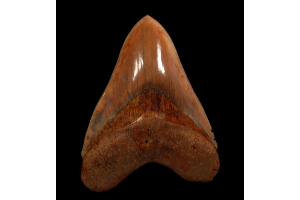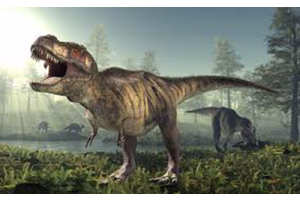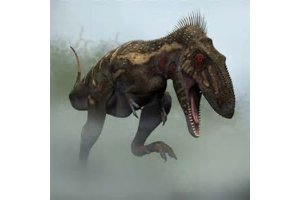Page 4 - Gary Greaser
- - August 11, 2025
Pine cones have fascinated people for centuries—partly for their rustic beauty and partly for their sheer mystery. But when you come across a giant pine cone, the kind you’ll see in fossil collections or even on high-end collector websites featuring large pine cones for sale, you might wonder: Are these tough, prehistoric structures nature’s armor? Or are they simply massive seed carriers from an ancient world?
Let’s peel back the layers—just like a cone—and find out.
What Exactly Is a Pine Cone?
To begin, a pine cone isn’t just a decorative object you find scattered on hiking trails. It’s the reproductive organ of pine trees—more specifically, a seed-bearing structure for conifers. There are male and female cones, but the large ones we’re most familiar with are the females. These are responsible for protecting seeds until they’re mature enough to be released and carried off by wind, gravity, or animal helpers.
And while today’s cones are impressive, the real jaw-droppers come from
- - August 11, 2025
The Dromaeosaurs were among the most captivating and fearsome theropods to walk the Earth during the Late Cretaceous period. Despite their modest size, these raptors dominated their environment with a lethal combination of speed, intelligence, and physical weaponry. At Buried Treasure Fossils, we are proud to offer authentic and legally collected fossil specimens that honor the legacy of these fascinating creatures.
Here are a few aspects to consider about raptor claw on sale:
Apex Raptors of the Late Cretaceous
The Dromaeosaurs were not the largest dinosaurs roaming North America 66 million years ago, but they were undoubtedly among the most skilled and dangerous. These agile theropods measured around 7 feet long from nose to tail and are believed to have been highly active predators. Unlike their bulkier relatives, Dromaeosaurs likely relied on pack behavior, coordination, and speed to thrive in the competitive ecosystems of their time.
What truly set them apart, however, was their anatomy.
- - August 11, 2025
There’s something timeless and mesmerizing about ammonites. These extinct marine creatures left behind intricate spiral shells that, millions of years later, continue to inspire awe and admiration. At Buried Treasure Fossils, we proudly offer a thoughtfully curated and expansive collection of ammonite fossils that celebrate nature’s ancient design. Each fossil tells a silent story from Earth’s distant past—one that you can hold, admire, and display.
Whether you’re an experienced fossil enthusiast or a newcomer fascinated by natural history, our offerings provide an extraordinary opportunity to connect with the prehistoric oceans that once covered our planet.
A Rich Diversity from Around the World
Our collection is as diverse as the places these ancient creatures once roamed. We carry ammonites from a wide range of globally recognized fossil regions including France, Madagascar, Morocco, and Russia. Each origin brings its own distinctive qualities, shaped by geological forces unique to
- - August 11, 2025
At Buried Treasure Fossils, we take pride in offering collectors, enthusiasts, and admirers of natural history a rare chance to own some of the finest Crinoid fossils on sale. These aren’t just fragments of ancient marine life—they are extraordinary, large, and complete fossil specimens of Scyphocrinites elegans, revealing an intricate glimpse into a long-lost underwater world. Each fossil showcases unmatched detail, preserved through time for over 420 million years.
In this blog, we’ll take you on a journey through the captivating world of fossil crinoids, share what makes our collection stand out, and explain why these Upper Silurian marvels from Morocco are so revered among fossil collectors.
Here are a few aspects to consider:
A Window into the Silurian Seas
Our Scyphocrinites elegans crinoids come from the Upper Silurian period, dating back approximately 420 million years. This ancient era, part of the Paleozoic Era, was characterized by the proliferation of diverse marine life.
- - August 11, 2025
Fossil fish offer a fascinating glimpse into ancient aquatic ecosystems, and few locations rival the Green River Formation when it comes to both diversity and preservation. At Buried Treasure Fossils, we take pride in offering a large and carefully curated selection of fish fossils on sale, including some of the finest Green River specimens available anywhere in the world.
Whether you’re a seasoned collector or someone looking to start your fossil journey, our collection showcases incredible examples of fossilized fish that have been immaculately preserved for millions of years. Let’s explore what makes these fossils unique and why so many collectors turn to us for authentic, top-quality pieces.
Consider these key aspects when exploring our collection of fish fossils on sale:
A Glimpse into Prehistoric Waters: The Green River Formation
The Green River Formation, located in the western United States, is a treasure trove of prehistoric aquatic life. This Eocene-aged deposit—formed around
- - August 11, 2025
Beneath layers of earth and time lies a delicate world forgotten by most but remembered by stone. These are not monuments or artifacts crafted by human hands—they are whispers of life itself, preserved with quiet precision. From tiny fins to delicate spines, fossilized fish from ancient lakebeds reveal a world teeming with movement and mystery. Somewhere in the middle of this incredible history lies the charm and significance of green river formation fossils, a subject of deep fascination for collectors, educators, and curious minds alike.
A Window into a Prehistoric Freshwater World
Roughly 50 million years ago, the region that now encompasses parts of Wyoming, Colorado, and Utah looked vastly different from its current appearance. Back then, it was home to a series of large, subtropical lakes that supported a wide array of plant and animal life. These waters provided nourishment, shelter, and balance to an ecosystem whose residents left behind one of the richest fossil records ever discovered.
- - August 11, 2025
At first glance, a hammerhead shark tooth might just look like a sharp, fossilized relic. But dig a little deeper, and you’ll find it’s so much more; it’s a piece of a vast and intricate puzzle that spans millions of years. These teeth aren’t just souvenirs of ancient creatures; they’re keys unlocking mysteries about evolution, climate change, and life beneath the waves long before humans ever existed.
This blog takes you beyond the surface to explore some of our most remarkable fossil discoveries, including hammerhead shark teeth and jaw-dropping specimens from multiple Sphyrna species, such as the Great Hammerhead.
With teeth dating from the Eocene all the way to the Pleistocene, these fossils offer unique insights into how these iconic sharks adapted, thrived, and shaped their underwater world. Ready to uncover what a shark’s tooth can teach us? Let’s dive in.
The Hammerhead’s Evolutionary Journey in Fossil Teeth
Hammerhead sharks belong to the genus Sphyrna, easily recognized by the
- - August 11, 2025
Millions of years ago, a sleek, serrated-tooth predator ruled the warm coastal waters of what is now North America, Europe, and parts of Africa. Today, that same marine hunter exists not in the oceans, but in fossil collections and museum displays. Revered by fossil lovers and paleontology buffs, the snaggletooth shark and its uniquely curved teeth—especially from the extinct species Hemipristis serra—have transitioned from terrifying predator to sought-after relic. Here at Buried Treasure Fossils, we proudly offer a curated selection of these teeth, prized for their rarity, beauty, and historical significance.
From Ocean Predator to Fossil Rarity
The snaggle tooth shark, scientifically known as Hemipristis serra, made its first appearance during the Oligocene epoch, which dates back approximately 30 million years. This ancient shark belonged to the Weasel shark family, a group known for their agile hunting abilities and distinct dental adaptations. Over time, Hemipristis serra evolved
- - August 11, 2025
Fossil collecting is an immersive journey into Earth’s prehistoric past, where every specimen tells a story of ancient ecosystems, evolutionary marvels, and geological time. Among the most enchanting marine relics unearthed from Morocco’s fossil-rich landscapes are the beautifully preserved echinoderms that continue to captivate collectors across the globe. From their striking symmetry to their remarkable detail, these fossils remain essential additions to any serious collection, especially for those seeking a starfish fossil for sale or hoping to add a unique brittlestar fossil for sale to their growing display.
Discovering Prehistoric Elegance: Moroccan Brittle Stars and Starfish
Morocco has long been revered as a paleontological treasure trove. Its vast deposits span millions of years and contain fossils from nearly every major period of life on Earth. One of its most awe-inspiring contributions to the fossil world is the unmatched preservation of brittle stars (Ophiuroidea) and starfish
- - August 11, 2025
Trilobites lived on Earth before any plant reached land. They crawled across seabeds over 500 million years ago, long before the appearance of dinosaurs, mammals, or humans. These ancient creatures left behind fossil remains that have survived continental drift, extinction events, and the passage of time. We offer trilobite fossils for sale that come directly from ancient ocean floors. Each one represents real life, not a replica. These fossils connect you to the early chapters of natural history. When you hold one, you are a part of a lost world. These are not ornaments. They are evidence of Earth’s first age of animals.
Here is more detailed information:
Understand What Makes Trilobites Special
Trilobites did more than exist. They evolved, adapted, and thrived for over 270 million years. Their hard exoskeletons are divided into three parts, giving them their name. Some species had hundreds of eye lenses. Others protected themselves with spines. They walked the sea floor with purpose.







